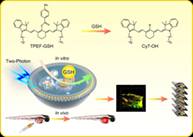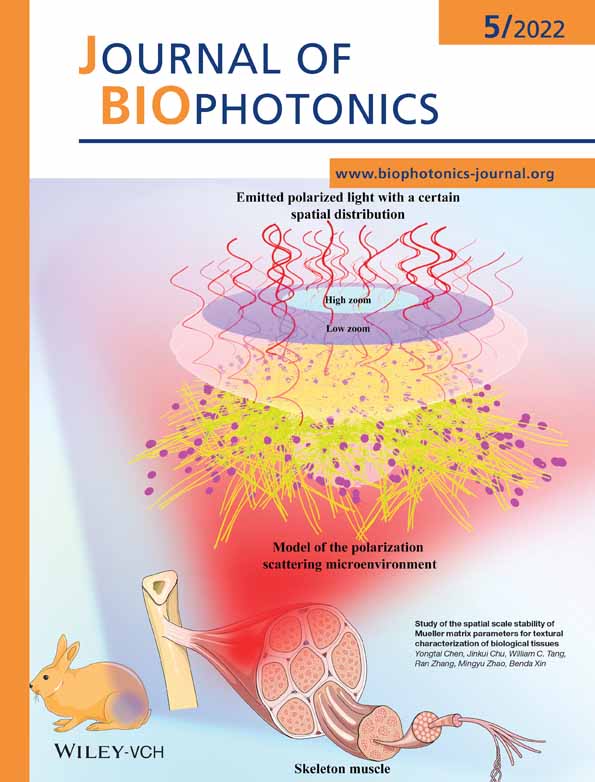In-vivo two-photon visualization and quantitative detection of redox state of cancer
Wei Wang, Chenlu Wang and Guoming Liu contributed equally to this work.
Funding information: Natural Science Foundation of Fujian Province, Grant/Award Numbers: 2021J01392, 2020J01155; Health and Education Commission of Fujian Province, Grant/Award Number: 2019-WJ-20; National Natural Science Foundation of China, Grant/Award Numbers: 21874024, 82001806, 82001875, U21A20377
Abstract
Glutathione (GSH), the most common and abundant antioxidant in the body, is particularly concentrated in cancer cells (2–10 mM). This concentration is approximately 1000 times that of normal cells, making GSH a specific tumor marker. Overexpression of GSH is critical for mapping the redox state of cancer cells. However, there are few probes and detection methods responsive to GSH that can quantitatively visualize GSH in vivo in two-photon excitation fluorescence (TPEF) imaging mode. The experimental results show that TPEF-GSH could not only target GSH in tumors, but also establish the quantitative relationship between TPEF signal and GSH concentration. We explored the optimal two-photon excitation wavelength of TPEF-GSH, the optimal cell incubation duration with TPEF-GSH, the best imaging time point for GSH in cells, and the quantitative relationship between the TPEF signal and the changes in GSH concentrations. In zebrafish embryo and zebrafish experiments, the ratiometric value of TPEF-GSH increased with the decrease of GSH concentration. Microinjection and co-incubation were used to verify whether the ratiometric value could quantify endogenous GSH in tumor-bearing zebrafish, and the obtained GSH levels were 4.66 mM and 5.16 mM, respectively. The ratio TPEF probe could accurately visualize and quantify GSH in vivo, reflecting the redox status of the tumor. The design of the ratiometric molecular probe provides a reliable strategy for the development of TPEF nanoprobe in vivo. In this article, a new GSH sensitive molecular probe, TPEF-GSH, has been developed with good specificity and sensitivity. TPEF-GSH was successfully used to image cancer cells in vitro and tumor-bearing zebrafish in vivo, and to further detect GSH levels.
CONFLICT OF INTEREST
The authors declare no potential conflict of interest.
Open Research
DATA AVAILABILITY STATEMENT
Data openly available in a public repository that issues datasets with DOIs.




